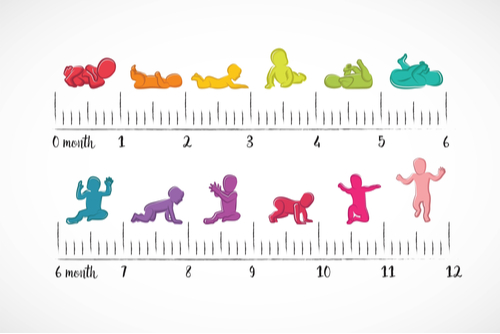
Blog

Early Childhood Developmental Milestones: Key Growth Factors
Young children develop new skills and vocabulary at what sometimes feels like the speed of light. Young children are amazing learners and learn many different things both consciously and subconsciously. Early childhood developmental milestones are vast and various.
For example, toddlers, when learning motor skills and physical boundaries also learn accompanying speech, social cues and emotional tools. This is just one of the reasons why early childhood development is so important: to ensure children are socialised in an environment that can teach them how to behave as they continue to grow. We have covered this in our previous blog post.
Parents and preschool teachers alike tend to keep an eye out for important changes as the children in their care develop. It helps to know which early childhood developmental milestones to look out for so you don’t become overwhelmed as your children grow.
There are four primary skill areas children will develop as they grow older:
- Social and emotional
- Language and communication
- Movement and physical development
- Cognitive
In healthy children, these areas should be considered as equally important. Excluding one of these learning areas can make learning as a whole more difficult for young students. Behavioural difficulties may arise when emotional expression lacks development, yet in saying this, it doesn’t necessarily help children by comparing their early childhood developmental milestones against a checklist. This is because early childhood development doesn’t happen in a linear, chronological fashion; it varies from child to child.
Despite this, the following list of early childhood developmental milestones can be fun to look out for and will give parents an indication of their child’s proficiencies and areas of improvement within their early childhood education.
2 – 4 months old
- Try to look at parents; begin to smile.
- Copy some movements and facial expressions.
- Turns head toward sounds.
- Tracks movement with their eyes.
- Starts to babble.
- Holds head up, can push up while lying on tummy.
6–9 months old
- Recognize faces.
- Sit without support.
- Has favourite toys.
- Can pick up objects between thumb and index finger.
- Pull themselves to stand while holding on to objects.
Milestones at one year old
- Are often shy or nervous with strangers.
- Use simple gestures.
- Say “mama” and/or “dada”.
- Follow simple directions like, “Pick up that toy”.
- Find hidden items easily.
- May stand or take a few steps without support.
18-months old
- Initiate play by handing things to others.
- Point at what they want.
- Say several single words.
- Know how ordinary objects (telephone, spoon) are used.
- Eat with spoons and drink with cups.
Two years old
- Show excitement around other kids.
- Repeat words or sentences often overheard.
- Begin to sort shapes and colours.
- Begin to run, climb, throw and stand on tiptoe.
Milestones at three years old
- Exhibit a wide range of emotions.
- Show concern for others.
- Follow instructions with two or three steps.
- Play make-believe.
- Dress and undress themselves.
Milestones at four years old
- Enjoy trying new things and talking about interests.
- Know some basic grammar rules.
- Start to understand time and the idea of counting.
- Pour, cut and mash their food with supervision.
Milestones at five years old
- Like to sing, dance and act.
- Speak clearly in full sentences.
- Can print some letters or numbers.
- Can use the toilet on their own.
Observing children grow and understanding what they need during different stages of their early childhood helps teachers and parents see where areas of improvement lie and where children are performing effectively. When teachers partner with parents to observe early childhood developmental milestones, both parties are able to provide the best support available for each child.
